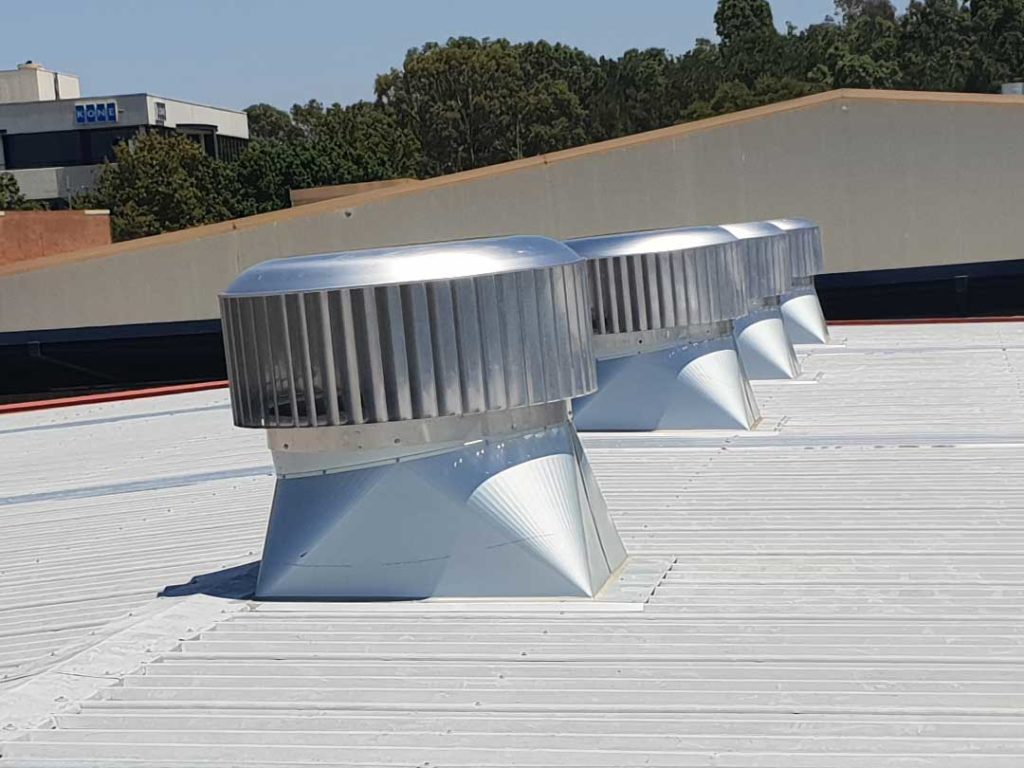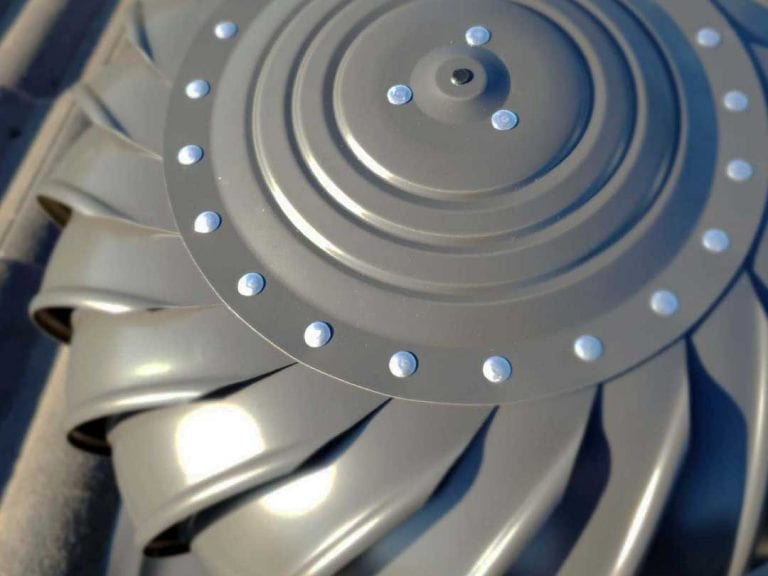Unlocking the Power of Turbine Roof Vents for Industrial Spaces: Installation, Maintenance, and Benefits
Industrial kitchens, large factories, and warehouses are bustling hubs of activity, where temperature control and ventilation are paramount. These environments often face challenges such as heat buildup, moisture accumulation, and poor air quality. One innovative solution that has gained prominence in recent years is the turbine roof vent, also known as a whirlybird or turbo ventilator. In this comprehensive guide, we’ll explore the various aspects of turbine roof vents for industrial spaces, including installation, maintenance, sizes, suppliers, and the numerous benefits they offer, with a specific focus on their application in Australia.
Understanding Turbine Roof Vents
Turbine roof vents are roof-mounted devices designed to improve ventilation and regulate temperature within industrial settings. They consist of a series of vanes or blades, typically constructed from metal or plastic, which rotate with the wind or temperature differentials. As they spin, these vanes create a suction effect, drawing hot, stale air out of the building and allowing fresh, cooler air to enter. This natural ventilation system is highly effective and energy-efficient, making it a popular choice for a wide range of industrial applications.
Turbine Roof Vent Sizes and Installation
One of the first considerations when installing turbine roof vents is selecting the appropriate size for your specific industrial space. The size of the vent will largely depend on factors such as the building’s square footage, the volume of air that needs to be ventilated, and the local climate conditions. Generally, larger industrial facilities like factories and warehouses will require multiple vents to ensure adequate ventilation.
The installation process of turbine roof vents is critical to their effectiveness. It is recommended to hire professional contractors with experience in industrial ventilation systems. Proper placement and sealing are crucial to prevent air leaks and water infiltration. Additionally, ensuring that the vents are oriented to capture prevailing winds optimizes their performance.
Turbine Roof Vent Maintenance Guide
Like any mechanical system, turbine roof vents require regular maintenance to ensure they continue functioning efficiently. Here’s a step-by-step guide to maintaining your turbine roof vents:
- Inspect Annually: Schedule an annual inspection to check for any visible damage, loose screws, or rust. This is also an opportunity to clean the vent and remove any debris that may have accumulated.
- Lubricate Moving Parts: The rotating vanes of the vent may benefit from occasional lubrication to maintain smooth movement. Be sure to use a lubricant suitable for the material of your vent.
- Check Seals and Flashing: Inspect the seals and flashing around the vent to ensure they are intact and free of cracks. Proper sealing is essential to prevent water leaks during heavy rain.
- Test Rotation: In windy conditions, confirm that the vent blades are rotating freely. If they are stuck or sluggish, it may indicate a mechanical issue that requires attention.
- Clean Debris: Regularly remove leaves, dust, and other debris that may accumulate on the vent’s exterior. This debris can impede airflow and reduce the vent’s efficiency.
- Monitor for Rust: Keep an eye out for rust, especially in corrosive environments. Rust can compromise the structural integrity of the vent, so address it promptly.
- Replace Damaged Parts: If you notice any damaged or worn-out components during your inspections, replace them as soon as possible. This includes vanes, bearings, and seals.
By following these maintenance steps, you can ensure the longevity and optimal performance of your turbine roof vents.
Turbine Roof Vent Suppliers
Selecting the right supplier for your turbine roof vents is crucial to obtaining high-quality, durable products. In Australia, you’ll find several reputable suppliers offering a range of options to suit your specific needs. Some of the notable turbine roof vent suppliers in Australia include:
- Edmonds: Edmonds is a well-established Australian manufacturer of ventilation and air movement products. They offer a variety of turbine roof vents designed for industrial use, with a focus on energy efficiency and durability.
- Whirlybird: Whirlybird is a brand synonymous with turbine roof vents in Australia. They provide a wide selection of vents suitable for different industrial applications, and their products are known for their reliability and performance.
- Breezway: Breezway offers innovative and energy-efficient ventilation solutions, including turbine roof vents. Their products are designed to enhance airflow while minimizing energy consumption.
- Roof Vent Australia: Roof Vent Australia specializes in roof ventilation solutions and offers a range of turbine roof vents tailored to industrial settings. They provide both installation services and product sales.
When choosing a supplier, consider factors such as product quality, warranty, customer support, and the supplier’s track record in the industry. Request quotes and compare options to make an informed decision that aligns with your industrial facility’s requirements.
The Benefits of Turbine Roof Vents for Industrial Spaces
Turbine roof vents offer a plethora of benefits for industrial kitchens, large factories, and warehouses. Let’s delve into some of the key advantages:
- Effective Ventilation: Turbine roof vents provide natural ventilation, effectively removing heat, humidity, and pollutants from the building. This results in a more comfortable and safer working environment for employees.
- Energy Efficiency: By harnessing wind power and temperature differentials, turbine roof vents reduce the reliance on mechanical ventilation systems, leading to energy savings and lower operational costs.
- Moisture Control: Industrial spaces often generate moisture through processes like cooking or machinery operation. Turbine roof vents help prevent moisture buildup, reducing the risk of mold and mildew growth, which can be detrimental to products and equipment.
- Temperature Regulation: These vents help regulate indoor temperatures, preventing excessive heat buildup during hot weather and reducing the need for air conditioning. In colder months, they can assist in expelling trapped warm air.
- Improved Air Quality: Turbine roof vents constantly exchange indoor and outdoor air, improving indoor air quality by removing pollutants, odors, and fumes.
- Eco-Friendly Solution: Using natural wind power for ventilation reduces greenhouse gas emissions and lowers the environmental footprint of industrial facilities.
- Cost Savings: The initial investment in turbine roof vents is offset by long-term energy savings and reduced maintenance costs compared to mechanical ventilation systems.
- Compliance with Regulations: Adequate ventilation is often a regulatory requirement in industrial settings to ensure the health and safety of workers. Turbine roof vents help meet these compliance standards.
Whirlybird Benefits for Warehouses: A Closer Look
Warehouses, in particular, stand to gain significant advantages from the installation of turbine roof vents, commonly referred to as whirlybirds in Australia:
- Condensation Control: Warehouses can experience condensation issues, especially in regions with fluctuating temperatures. Turbine roof vents help reduce condensation, preventing damage to stored goods.
- Preservation of Inventory: Maintaining a consistent temperature and humidity level in a warehouse is essential for preserving products and materials. Turbine roof vents contribute to ideal storage conditions.
- Energy Efficiency: Warehouses often have large roof spaces, making them energy-intensive to cool. Whirlybirds reduce the need for air conditioning, leading to substantial energy savings.
- Worker Comfort: Improved air quality and temperature control create a more comfortable working environment for warehouse staff, potentially increasing productivity and reducing employee turnover.
- Fire Safety: Turbine roof vents can aid in the removal of smoke and fumes in the event of a fire, enhancing safety and allowing for more efficient firefighting efforts.
Conclusion
Turbine roof vents, also known as whirlybirds or turbo ventilators, have become indispensable tools in the arsenal of industrial facilities seeking to improve ventilation, temperature regulation, and overall operational efficiency. Proper installation and regular maintenance are crucial to reaping the full benefits of these natural ventilation systems. With various sizes and reputable suppliers available, finding the right turbine roof vent for your needs is more accessible than ever.
Whether you’re managing an industrial kitchen, a large factory, or a sprawling warehouse, integrating turbine roof vents into your ventilation strategy can lead to cost savings, improved air quality, enhanced worker comfort, and compliance with regulatory standards. In Australia, where temperature extremes are common, these vents offer a sustainable and effective solution to the challenges posed by industrial environments. So, harness the power of the wind and temperature differentials with turbine roof vents to create a healthier, more efficient workplace for your industrial operations.



